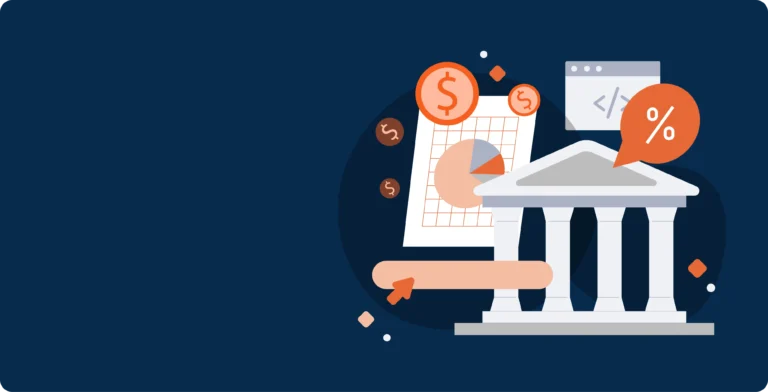The financial sector is evolving faster than ever, and machine learning is at the center of this transformation. From fraud detection to algorithmic lending, machine learning in banking is no longer optional. It’s essential. With increasing customer expectations, the rise of fintech challengers, and exponential data growth, banks are under pressure to become more efficient, proactive, and intelligent.
But how is machine learning used in finance today? What does it do in the context of traditional and digital banks?
This article explores five critical machine learning applications in banking and how they’re radically changing operations, security, customer service, and profitability.
We’ll also compare how ML aligns with ICT in banking and where fintech outpaces traditional banks using these innovations.
What Is Machine Learning in Banking?
Machine learning is a branch of artificial intelligence (AI) that enables computers to learn from data and improve their performance without being explicitly programmed. In banking, ML algorithms analyze massive volumes of financial data to identify patterns, make predictions, and automate decision-making processes.
This capability turns banks from reactive institutions into predictive powerhouses. Instead of waiting for a fraud report, ML can detect it in real time. Instead of rigid loan assessments, ML can personalize credit decisions.
So, when you ask “What is machine learning in banking?”The answer is simple: it’s a game-changer across all verticals of the financial ecosystem.
1. Fraud Detection & Risk Management
Use Case: Real-Time Transaction Monitoring
One of the most powerful applications of machine learning in banking is fraud detection. Traditional systems rely on static rules (e.g., flagging all transactions over $5,000). ML goes beyond – analyzing user behavior, geolocation, device fingerprints, and historical spending to flag anomalies.
For instance, JPMorgan Chase uses ML to scan billions of transactions daily to detect unusual activity. When a suspicious pattern arises, like a sudden foreign transaction from an unrecognized device, the algorithm intervenes automatically.
How It Works:
- Trains on past fraud examples
- Creates behavioral models for every customer
- Flags new deviations instantly
Why It Matters:
- Reduces false positives (legit transactions getting flagged)
- Detects fraud before it causes damage
- Saves millions in chargebacks and compliance fines
2. Credit Scoring & Loan Underwriting
Use Case: AI-Driven Lending Decisions
Traditionally, banks judged creditworthiness using static criteria: credit history, income, and employment status. But ML brings flexibility and depth to credit models.
Fintech lenders like Upstart and Kabbage use machine learning algorithms that consider hundreds of factors, including education, utility payments, and even online behavior to predict repayment potential more accurately than legacy FICO systems.
How It Works:
- Trains on thousands of successful/failed loan cases
- Weighs diverse data points beyond traditional credit metrics
- Continuously improves risk accuracy over time
Why It Matters:
- Expands financial inclusion for thin-file or underbanked customers
- Reduces non-performing loans (NPLs)
- Enables faster loan approvals (some in seconds)
3. Customer Service via AI Chatbots
Use Case: Virtual Banking Assistants
ML powers AI chatbots and virtual assistants that can answer account inquiries, help with card blocking, or even offer investment advice 24/7.
For example, Bank of America’s Erica is a virtual assistant that uses natural language processing (NLP) to understand customer requests and deliver solutions, from sending money to reviewing spending habits.
How It Works:
- Trained on massive conversational data
- Uses NLP to understand intent
- Gets smarter with each interaction
Why It Matters:
- Cuts down call center costs
- Increases customer satisfaction and loyalty
- Enables self-service banking experiences
This is also how ICT is used in banking; integrating digital communication systems with AI enhances responsiveness across devices.
4. Personalized Marketing and Cross-Selling
Use Case: Targeted Product Recommendations
Banks are sitting on a goldmine of customer data, but only ML can unlock its full potential.
By analyzing transaction history, app usage, and even life events (e.g., marriage, new job), ML models can predict which financial products a user is most likely to need next. This means no more random emails, just timely, relevant offers.
How It Works:
- Segments customers dynamically
- Predicts life milestones and product needs
- Tailors messages to individual behavior
Why It Matters:
- Increases cross-sell conversions
- Boosts revenue per customer
- Builds long-term customer relationships
5. Algorithmic Trading and Wealth Management
Use Case: ML-Driven Portfolio Management
Machine learning is revolutionizing investment banking and wealth management. Hedge funds and wealth managers use ML to analyze market trends, news sentiment, macroeconomic data, and trading patterns to predict asset performance.
Apps like Wealthfront or Betterment deploy ML-powered robo-advisors that rebalance portfolios automatically based on changing risk profiles.
How It Works:
- Analyzes real-time market data
- Adapts trading strategies with minimal human input
- Continuously learns from past trades
Why It Matters:
- Improves portfolio returns
- Reduces emotional bias in investing
- Makes sophisticated investing accessible to everyone
How Is Fintech Different from Traditional Banking Using ML?
Traditional banks have the data and customers, but fintechs have agility. That’s the core difference.
Fintech companies were born in the cloud, thrive on data science, and deploy ML in every corner, that is from compliance (RegTech) to onboarding (Know Your Customer via facial recognition).
Traditional banks, however, often lag due to:
- Legacy IT infrastructure
- Slower compliance processes
- Organizational resistance to change
But that’s shifting fast, as banks partner with fintechs or build in-house AI labs.
Stat: According to McKinsey, financial institutions that deploy AI at scale can increase profits by 20–25% while reducing operating costs by up to 30%.
Frequently Asked Questions
What is machine learning in banking?
ML in banking refers to the use of data-driven algorithms that can learn from historical financial data to automate tasks like fraud detection, customer service, credit scoring, and investment decision-making.
How is ICT used in banking alongside ML?
Information and Communication Technology (ICT) provides the infrastructure, such as mobile apps, internet banking, and APIs. While ML provides the intelligence behind the scenes.
What are some machine learning in banking examples?
- Fraud detection at JPMorgan
- Loan underwriting at Upstart
- Erica chatbot by Bank of America
- Robo-advisors at Wealthfront
Is machine learning safe for banking?
Yes, when deployed responsibly. ML models must comply with data privacy laws (like GDPR and CCPA) and undergo regular audits to avoid bias and errors.
Machine Learning Is the Future of Finance
From smarter fraud detection to hyper-personalized banking, machine learning isn’t only improving finance, it’s redefining it.
Banks that fail to adopt ML will struggle to keep pace with fintech challengers. But those who embrace it will unlock speed, scalability, and intelligence never before possible in the industry.
Machine learning in banking is no longer an experiment, it’s the operating system of future finance.


